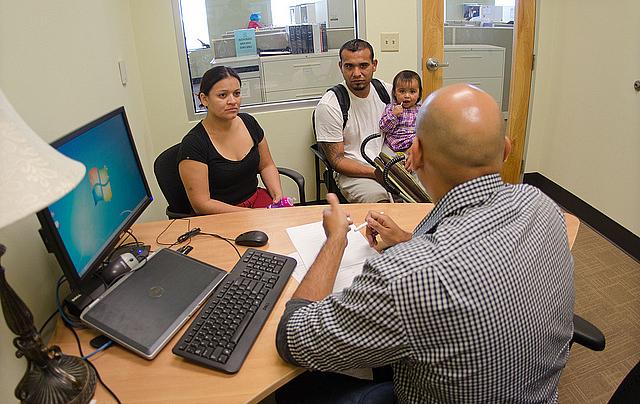How do you get more kids into health coverage? Start by enrolling their parents

In a perfect world, everyone in a family would have health insurance. In the actual world, many low-income families are a mixed bag when it comes to insurance. Children are often eligible for health coverage even when their parents are not, but just because kids are eligible doesn’t mean they’re enrolled.
If the policy goal is to get more kids insured (it’s a worthy goal, since children and adults with insurance typically have better health outcomes), then programs that focus just on kids may be necessary but not enough to ensure that happens. Parents, not unexpectedly, turn out to be crucial. The odds of a child having health insurance are a lot higher if mom or dad has coverage, too.
That was the finding of a longitudinal study that tracked parents and children enrolled in public coverage in Oregon from 2002 to 2010. That period was especially interesting since three big health policy changes in the state during that time meant that researchers at Oregon Health & Science University could look at what happened to children when parents lost Medicaid coverage and then slowly gained it back, even as the state’s Children’s Health Insurance Program expanded eligibility. Researchers found that having a parent on Medicaid made it much more likely a child was insured:
“Our results suggest that children whose parents were covered by public insurance had similar patterns of coverage to their parents, even though policies diverged for children and adults,” the authors wrote in the study.
So what’s going on here? One explanation is that parents who aren’t enrolled in public coverage may not realize their kids are eligible for coverage, through the Children’s Health Insurance Program, for example. Or if parents lose their Medicaid eligibility, they may wrongly assume their kids are now ineligible for coverage as well.
Policy folks sometimes refer to this dynamic as the “welcome mat effect,” and the idea is simple: Exploring coverage options for themselves makes parents much more likely to discover programs for their kids — and enroll them.
Sophia Duong, a state health policy analyst at Georgetown’s Center for Children and Families, recently highlighted the Oregon study and its policy implications:
Increased eligibility levels for children are important for coverage, but equally important is coverage for their parents. Parent coverage has a significant influence on children’s coverage, so policies that prevent parents from enrolling into coverage also hurt children.
Policies that keep parents from enrolling include the decisions by 19 states not to expand Medicaid in the wake of the Affordable Care Act. It’s not hard to understand why the 31 states that expanded adult Medicaid eligibility will have many more opportunities to enroll eligible children as well, as parents look into their own coverage options and gain knowledge of the system. As the Oregon study suggests, withholding the welcome mat from low-income adults can have the unfortunate side effect of keeping eligible kids out of the system as well. And that’s bad for their health.
H/T: Georgetown’s Center for Children and Families
[Photo by USDA via Flickr.]

